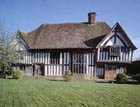How to look after your period property
An estimated 70% of heritage building and maintenance work is undertaken by unskilled practitioners, often with irreversible damage. Our new series aims to explain how to really look after your period property.


Welcome to the first in a series of articles from Projectbook, the essential resource for owners of period and listed properties.
The British have long had a love affair with older property, which we cherish as part of our national heritage. The UK is home to nearly six million period properties, almost 500,000 of them listed, which pre date the 1920's. From the humble Victorian cottage to a grand stately home, all of these properties have been ‘traditionally' constructed and require people with the specialist knowledge and traditional skills to maintain and repair them.
Many builders are no longer trained to understand these different building techniques, which is why, according to the Wedgewood Markham Survey undertaken in 1995, an estimated 70% of heritage building and maintenance work is undertaken by unskilled practitioners, often with irreversible damage to the property they are ‘repairing'.
Until around1919 lime mortars and renders had generally been employed in construction, but from this point cement mortars and renders began to be widely used. Unlike lime, cement is impermeable and stops a building from ‘breathing'. As a consequence, using cement mortars and renders to repair older homes can be hugely damaging and often leads to problems with damp and rot.
Owners of pre-1919 homes themselves are often not aware of the damage that can be done by using modern methods of construction on a period property.
Projectbook has been created to help owners understand how their buildings work and to help them find appropriate craftsmen and products to look after their properties.
Why is it so important to employ specialists?
Sign up for the Country Life Newsletter
Exquisite houses, the beauty of Nature, and how to get the most from your life, straight to your inbox.
Employing the right people will save you time and money and add value to your property. Every day, damage is done to our built heritage by unskilled practitioners using the wrong materials.
First Things First - start by understanding your property
As every building is different, it's very useful to have at least a basic understanding of your property, before embarking on any works. You can use the services of a house historian, or take time yourself to discover as much as you can about your home's history and start to piece together how it was built, the techniques and materials used, along with decorative schemes employed around the period. Most owners find this a rewarding experience and of significant benefit when it comes to selecting the right consultants, builders and craftsmen for their project.
Advice from the professionals
Perhaps the best way to start, and well worth considering, is booking yourself onto a specialist course. Many heritage organisations put on events, specifically designed to give home owners a basic knowledge of old buildings, traditional skills, techniques and the use of appropriate building materials. You'll find details of suitable courses in your area on the ProjectBook website.
Conservation vs Restoration (refurbishment, renovation)
Before choosing specialists it's vital that a basic understanding of two principles is clearly understood. It's a complex subject, but in short, conservation means conserving the fabric of a building and only making repairs where absolutely necessary (on a like for like basis), whereas restoration can mean making repairs, but may be based on conjecture as to what elements of the building were like and is likely to include complete replacement, if deemed easier, more cost effective or desirable. If a building is listed, the conservation officer and heritage organisations are likely to insist (and want assurances) that a conservation approach is adopted. Listing covers a building in its entirely (not as is sometimes mistakenly believed certain parts) but, although listed building consent is required, does not necessarily preclude changes being made.
Before choosing a specialist make sure you are clear in your own mind the approach you would like to take with your home; the two principles are very different and you will need to choose the right people with the skills necessary to carry out the work as you wish.
Employing Consultants
For works on a larger scale, you would be well advised to employ the services of a specialist consultant; either an architect and/or a surveyor. You can find a comprehensive list of consultants in your area in the Heritage Register on Projectbook. Good professional advice is the key to a successful project and will save you time, frustration and money. A knowable consultant will be able to advice on complex issues associated with older buildings, obtain the necessary consents and can assist with finding the right people, with the relevant skills needed for the project. Before engaging any consultant, make sure they are experienced with buildings of the period and share the same conservation/restoration approach.
Employing Builders & Craftsmen
The success of your project will depend largely on the skills and integrity of the people working on your home. Because of the problems associated with old buildings, you will need traditionally trained builders and craftsmen who have the necessary skills and experience to advise and make day to day decisions which are sympathetic to your home.
Having work carried out on your older property should be a satisfying and even a pleasurable experience as long as you employ the right people. For more information visit the Projectbook website where you will find more articles, courses and events, helpful organisations, specialist products and a choice of local vetted craftsmen, contractors and consultants in our Heritage Register.
In the weeks that follow we're going to feature some craftsmen and builders who are properly trained to give advice on dealing with common problems which arise for owners of listed buildings. It's a wonderful opportunity to find out a bit more about the different talents our craftsworkers have, and what they are able to offer period property owners.
James Mott is managing director and founder of Projectbook
Country Life is unlike any other magazine: the only glossy weekly on the newsstand and the only magazine that has been guest-edited by HRH The King not once, but twice. It is a celebration of modern rural life and all its diverse joys and pleasures — that was first published in Queen Victoria's Diamond Jubilee year. Our eclectic mixture of witty and informative content — from the most up-to-date property news and commentary and a coveted glimpse inside some of the UK's best houses and gardens, to gardening, the arts and interior design, written by experts in their field — still cannot be found in print or online, anywhere else.
-
 'Monolithic, multi-layered and quite, quite magnificent. This was love at first bite': Tom Parker Bowles on his lifelong love affair with lasagne
'Monolithic, multi-layered and quite, quite magnificent. This was love at first bite': Tom Parker Bowles on his lifelong love affair with lasagneAn upwardly mobile spaghetti Bolognese, lasagne al forno, with oozing béchamel and layered meaty magnificence, is a bona fide comfort classic, declares Tom Parker Bowles.
By Tom Parker Bowles Published
-
 Country houses, cream teas and Baywatch: Country Life Quiz of the Day, April 24, 2025
Country houses, cream teas and Baywatch: Country Life Quiz of the Day, April 24, 2025Thursday's Quiz of the Day asks exactly how popular Baywatch became.
By Toby Keel Published
